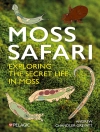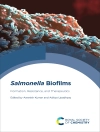This book presents cutting-edge papers and perspectives on the transport of oxygen to tissues by scientists in a multitude of disciplines such as biochemistry, engineering, mathematics, medicine, physics, physiology, veterinary and complementary medicine. The book is composed of the following 7 parts: 50th Anniversary, Brain, Clinical applications, Methods and techniques, Tumor Oxygenation, Tissue oxygenation and Muscle. The articles in this book have been presented at the 50th annual meeting of the International Society on Oxygen Transport to Tissue (ISOTT 2023). Academics, clinical and industry researchers, engineers, as well as graduate students who are interested in oxygen transport to tissue will find this book a great reference and a useful learning resource.
Inhoudsopgave
CELEBRATION OF THE 50th ANNIVERSARY OF ISOTT.- Biophysical modeling for insight into oxygen diffusion, distribution, and measurement.- Master Role of Hypoxia in Cancer Progression: Major Insights during ISOTT’s Half-Century.- Microvascular Shunts, Intracranial Pressure and the Impact of Drag-Reducing Polymers.- Optical Methods for the Study of Brain Metabolism in Situ.- Brain tissue oxygen dynamics under localized hypoxia in the awake state and the physical neuroprotective effects of general anesthesia.- Cerebral Oximetry in the Neonatal Intensive Care Unit: Discussion of Two Contradicting Study Results (Safe-Boos C-II, Safe Boos C-III).- Cerebral Oxygen Dynamics in a Patient after Subdural Hematoma Removal Surgery (A Case report).- Changes in regional cortical blood volume and oxygenation during induction of general anesthesia with sevoflurane versus propofol in a pediatric case of moyamoya disease, evaluated by near-infrared spectroscopy.- Comparison of cerebral saturation and brain net water uptake at moderate traumatic brain injury.- Comparison of secondary ischemia incidence, intracranial pressure and cerebrovascular reactivity dynamics during intrahospital transportation of severe TBI patients.- Dependence of cerebral oxygenation and task performance on colored light exposure and chronotype Blue and red do not have the same effects on the prefrontal cortex.- Differences in brain activity during real and virtual reality motor tasks in normal healthy individuals.- Effects of head elevation on cerebral oxygenation in acute cerebral infarction.- Evaluating the Status of the Injured Brain Cerebrovascular Reserve (CVR) is Not Equivalent to Induced Cerebrovascular Reactivity (i CVRx) and Induced Pressure Reactivity (i PRx) in Defining the Critical Cerebral Perfusion Pressure (CPP).- Hemodynamic response to spontaneous neural activity on the electroencephalogram in preterm infants.- Making Neuroendovascular Therapy for Cerebrovascular Disease Using Distaltrans-radial Artery Access Safer.- Mental workload and prefrontal brain activity during silent reading task in university students with problematic smartphone use.- Monoacylglycerol Lipase Inhibition Using ABX-1431 Attenuates Cerebral Ischemia Early after Traumatic Brain Injury.- Neural function desynchronization in left and right dorsolateral prefrontal cortices during virtual-reality earthquake video viewing.- Relationship of cognitive function with the oxygenated hemoglobin concentration difference between the left and right prefrontal cortex during 40-min moderate-intensity exercise.- Analysis of changes over time in blood amino acids during online hemodiafiltration dialysis in acute liver failure patients with hepatic encephalopathy.- Cerebral hypoxia during intermittent hypoxic-hyperoxic training (IHHT): A case study using cerebral oximetry based on time-domain near-infrared spectroscopy.- Comparison of eye-tracking parameters and brain oxygen saturation in patients with COVID-19 moderate pneumonia.- Effect of combined oxygen therapy and use of a surgical mask or N95 mask on inspired oxygen fraction and expired carbon dioxide fraction.- Effects of dual tasks including gum chewing on PFC activity.- Evaluation of the relationship between pulmonary perfusion via chest digital X-ray video imaging system and diffusing capacity test.- How to prevent fluid retention while preventing cerebral vasospasm after subarachnoid hemorrhage with endothelin receptor antagonist.- Hyperoxia-induced secondary respiratory failure in a systemic ischemia-reperfusion injury.- Prefrontal Cortex Oxygenation During Walking in an Acute Ischemic Stroke Patient with Severe Internal Carotid Artery Stenosis: A Case Report.- Relationship Between Regional Cerebral Oxygen Saturation and Percutaneous Oxygen Saturation at Initial Mobilization in Patients with Acute Heart Failure.- Relevance between reduction of Sp O2 and para-sympathetic nervous activity during sleep.- Therapeutic Potentials of Near-Infrared II Photobiomodulation to Treat Cardiovascular and Neurological Diseases via Augmenting Nitric Oxide Bioavailability.- Alleviation of Post-Sepsis Ischemia by Drag-Reducing Polymers.- Assessing Near-Infrared Optical Tomography’s Depth Capability in Imaging Brain Vessels An experimental study.- Augmenting Blood Test and Periodontal Examination Data with Generative Adversarial Networks for Enhanced Dementia Risk Prediction.-Cerebral oxygen monitoring in extremely low-birth-weight infants using time-domain near-infrared spectroscopy in transmittance mode.- Development of a remote health-monitoring system for frail people: a preliminary study.- Eumelanin and pheomelanin modelling in optical oximetry using pulse oximetry DC component.- Fabrication of tuneable tissue-mimicking phantom for optical methods.-Imaging Deep Hemorrhage and Ischemia in Preterm Infants’ Head with Time Domain Near-Infrared Optical Tomography phantom study.- Importance of serum albumin in machine learning based prediction of cognitive function data in the aged using a basic blood test.- PSAA-nn UNet An Efficient Method for Carotid Artery Segmentation.- Relationship between dementia and systemic metabolic disorders.- Understanding oxygen “buffering” by caveolae using coarse-grained molecular dynamics simulations.- Analysis of Connexin 43 and Spermin Co-Localization in Glioblastomas.- Impact of acute or chronic acidosis and hypoxia on gene expression patterns in tumor cells: potential functional implications.- Key Biophysical and Physiological Properties Impacting the Oxygenation Status of Breast Cancers During Thermo-Radiotherapy.- Changes in blood volume and oxygenation in lower limb tissue in patients maintaining the lithotomy position under general anesthesia.- Recognizing potential ambiguities in measurements of oxygen in tissues.- Tissue Oxygenation in Individuals with Spinal Cord Injury A pilot study.- Changes in cerebral oxygenation in the prefrontal cortex during cardiopulmonary exercise testing in patients following cardiovascular surgery.- Effect of Gum Chewing Training on Masseter Muscle Oxygen Dynamics.- Effect of resistance training on skeletal muscle mass and brown adipose tissue activity.- Effects of different gum hardness on masseter muscle activity during gum chewing: A NIRS Oximetry Study.- Muscle oxygen dynamics measured by NIRS.- Near-infrared spectroscopy analysis of triceps brachii muscle oxygenation during sprinting in wheelchair basketball players a pilot study.- Pupil dynamics, salivary alpha-amylase and Prefrontal Hemodynamics in Response to very light exercise.- Regional differences in skeletal muscle O2 dynamics during body weight resistance exercise with slow movement and tonic force generation.- Reversal of rocuronium-induced muscle relaxation with sugammadex enhances oxygen metabolism in skeletal muscle.
Over de auteur
Kaoru Sakatani, MD, Ph D (Med.), Ph D (Eng.), is a Project Researcher (Former Professor) at the Institute of Gerontology and the Graduate School of Frontier Sciences at the University of Tokyo. After graduating from Osaka Medical University in 1981, he earned his Doctor of Medicine in 1987 and Doctor of Engineering in 1998. He has worked internationally as an Assistant Professor at New York University (1989) and a Visiting Assistant Professor at Yale University (1989). He has also been a professor at Nihon University (2003). As a board-certified neurosurgeon, Dr. Sakatani focuses on dementia prevention and brain function research using NIRS and AI, earning the Japan Medical Association’s Medical Research Encouragement Award. He holds prominent positions in academic societies, including President of the ISOTT (2023).
Kazuto Masamoto, Ph.D. (Biomedical Engineering, is Vice-President (Globalization) and Professor of the Graduate School of Informatics and Engineering, Center for Neuroscience and Biomedical Engineering (CNBE). Director of the International Education Center, UEC. Associate Editor of Gero Science. [Interests] Biomedical imaging, Bigdata image analysis, Brain microcirculation and neurovascular coupling
Yukio Yamada, Ph D is a Professor Emeritus and Visiting Professor at Center for Neuroscience and Biomedical Engineering, The University of Electro-Communications, and a Project Researcher at Graduate School of Frontier Sciences, The University of Tokyo in Japan. His research fields are biomedical photonics and biomedical thermal engineering, particularly focusing on diffuse optical tomography, fluorescence diffuse tomography as well as theory of diffuse light propagation. He has authored or co-authored over 180 research papers, book chapters, and reviews.
Felix Scholkmann, Ph D is a lecturer at the University of Zurich and the head of a research group at the Biomedical Optics Research Laboratory (Dept. of Neonatology) of the University Hospital Zurich, University of Zurich in Switzerland, and at the University of Bern in Switzerland. His research primarily focuses on neurophotonics and biomedical signal processing, as well as integrative neuroscience and physiology. He has authored or co-authored over 150 research papers, book chapters, and reviews.
Joseph C. La Manna, Ph D is The Jeannette M. and Joseph S. Silber Professor for the Study of Brain Sciences in the Department of Physiology & Biophysics at Case Western Reserve University. He has been a member of ISOTT since 1974 and served as Past President of the Society (2009). He is the Series Editor of the ISOTT Proceedings. He has been involved in cerebrovascular research for 40 years. His research is concerned with brain metabolism, energy and cerebral blood flow, angiogenesis and neurodegeneration. The role of these mechanisms in tissue response to pathological insults (stroke, cardiac arrest and resuscitation, hypoxia) is being actively investigated. His recent research has centered on ketones, cerebral angiogenesis and the role of hypoxia-inducible factor-1 in physiological adaptation to hypoxia, neuroprotection and ischemic preconditioning. He has authored or co-authored over 200 research papers and review chapters.












